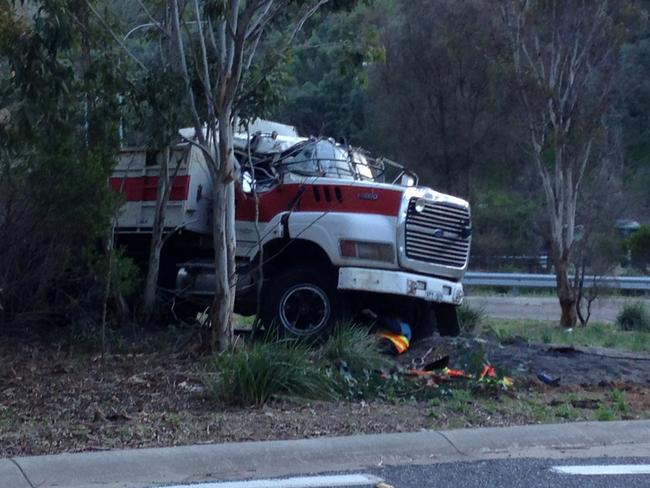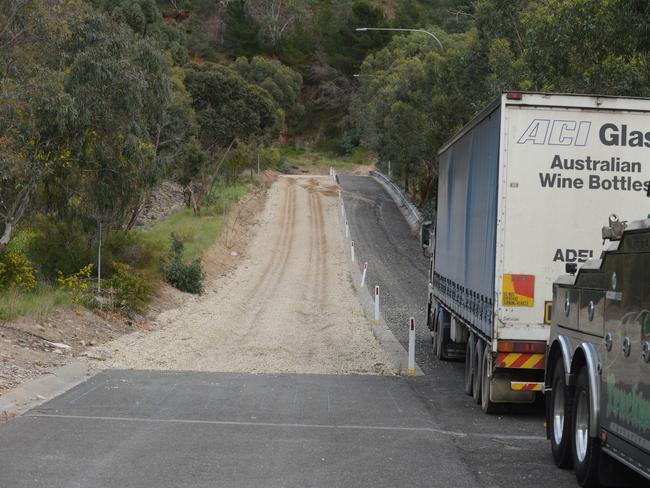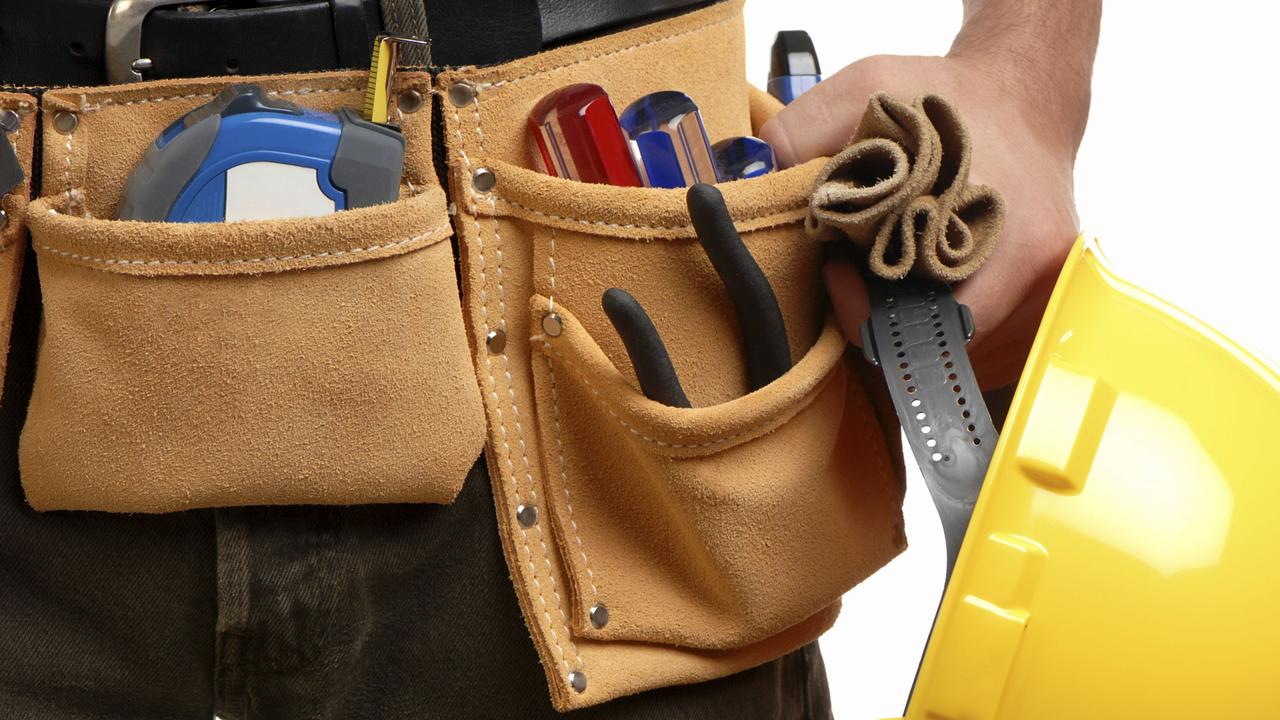Tougher new penalties for speeding truck drivers on South-Eastern Freeway
TRUCK drivers will face jail and companies huge new fines as the government continues to crack down on dangerous driving on the South-Eastern Freeway.
SA News
Don't miss out on the headlines from SA News. Followed categories will be added to My News.
- Out-of-control truck crashes on freeway
- Inside story of the horrific 2014 South-Eastern Freeway truck crash
TRUCK drivers will face jail and companies huge new fines as the State Government continues to crack down on dangerous driving on the South-Eastern Freeway.
The new reforms would create far tougher penalties for truck drivers who speed and don’t use a low gear on the downtrack of the freeway, and for companies who protect bad drivers.
Truck drivers will lose their licences and face tougher penalties, including imprisonment, under the new legislation to go before Parliament.
It’s the final set of reforms in response to coronial recommendations made into the death of truck driver James Venning and other serious and fatal crashes involving out-of-control trucks on the freeway.
Under the proposed laws, heavy-vehicle drivers who fail to use low gear or stick to the 60km/h speed limit for trucks will automatically lose their licences for at least six months and be fined almost $1000 for a first offence.

For a second offence, they would automatically lose their licence for 12 months, with a three-year loss for third and subsequent offences.
However, the courts could impose a far greater penalty, including jail and a three-year licence disqualification for a second or subsequent offence, and a year-long loss for a first.
To stop companies protecting dodgy truckies, the fine for businesses that fail to nominate a law-breaking driver would increase from $300 to $25,000 — or even $50,000 in court.
The new penalties would apply only to heavy vehicles on the freeway downtrack between Crafers and the Tollgate, a steep section notorious for trucks losing their brakes.
A truck driver rolled his vehicle just last week when he lost his brakes and was unable to use an arrester bed, because it was already in use by another truck.
He instead steered the truck off the side of the freeway near the Mount Osmond exit, where it rolled and crashed. He suffered minor injuries.
Transport Minister Stephen Mullighan said using low gear and sticking to the 60km/h speed limit was fundamental to ensuring heavy vehicles could safely navigate the steep descent between Crafers and the Tollgate.
“While the vast majority of heavy vehicle drivers on the freeway do the right thing, these penalties are designed to send a clear message to those who continue to risk the lives of other drivers by flouting these laws. Ignorance is not a defence,” he said.

As well as the new penalties, freeway speed cameras will be upgraded to better detect speeding trucks, length, number of axles and automatically detect numberplates.
The South-Eastern Freeway has seen a number of shocking truck crashes in the past few years, including the horrific double-fatal in 2014, where an out-of-control sewage truck smashed into cars waiting at the traffic lights at the bottom of the freeway.
And in 2015, the deputy coroner released his findings into the separate deaths of Mr Venning and John Posnakidis, which prompted many of the reforms.
In the wake of the 2014 smash, the speed limit on the freeway’s downtrack was cut to 90km/h for cars and 60km/h for buses and trucks, regardless of the number of axles.
The speed limit had already been reduced to 60km/h for heavy trucks.
While cautiously welcoming the new penalties, the SA Freight Council said the mandatory loss of licence after the first offence would have a significant affect on drivers’ livelihoods.
Executive officer Even Knapp said the SAFC wanted to ensure safeguards for times when “another party in the chain of responsibility may be at fault”.
“Should poor maintenance be the cause of a runaway truck, penalties should apply to the trucking company and its officers — not a driver whose life has also been put at risk.”
Mr Mullighan denied they were unfairly targeting the truck drivers, while ignoring the companies who placed pressure on them to meet tight deadlines.
“I think we’re getting the balance right — it’s the companies that have the legal responsibility to maintain their fleet, and by cracking down on their maintenance and management we’re sending a clear message to those companies that they’ve got to put safe trucks out on the road.”
Others in the indsutry, such as those packing the truck, could also come under scrutiny, he said.

The SA Road Transport Association welcomed the reforms, saying the vast majority of the 640,000 truck drivers that come down the freeway each year do the right thing.
“These tough new penalties will make that tiny recalcitrant minority think again and comply with
the rules and come down the freeway safely,” executive officer Steve Shearer said.
Mr Mullighan said the Government had considered a third arrester bed for the freeway — a recommendation by the deputy coroner in 2014 — but been unable to find an effective spot.
“There were a whole number of different designs we looked at, whether it was an arrester bed on the left-hand side or even in the middle of the road.
“But we’ve got some challenging terrain there.”
He said the Government had offered to pay companies the fee for removing trucks from the arrester beds.



